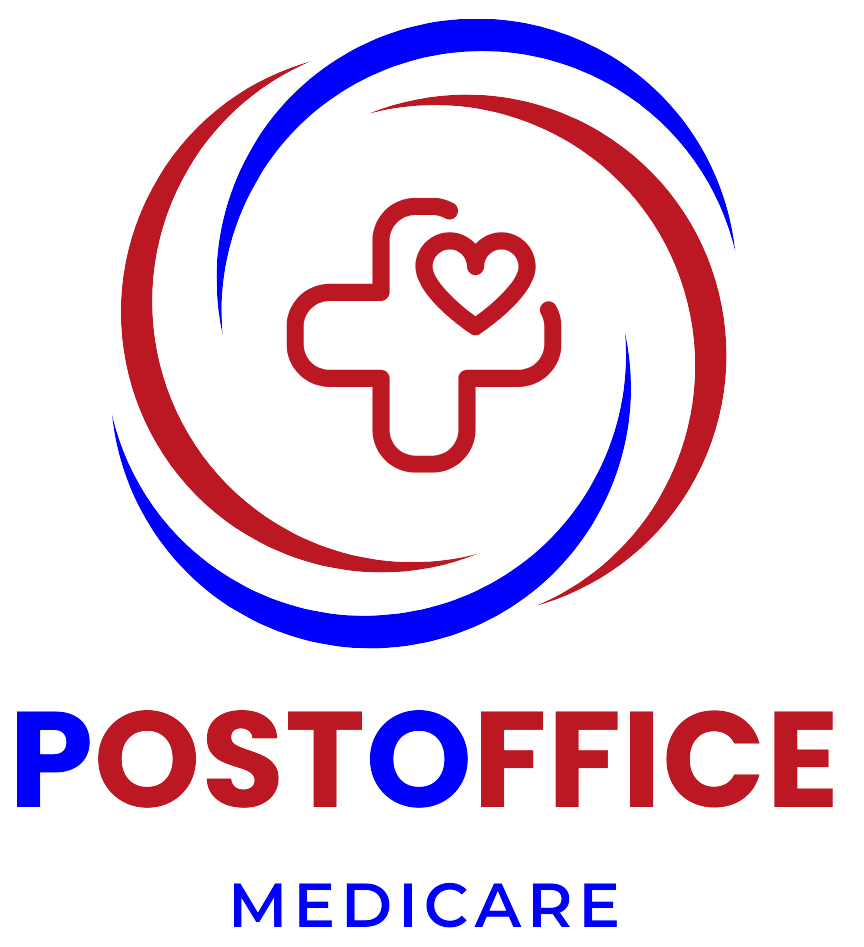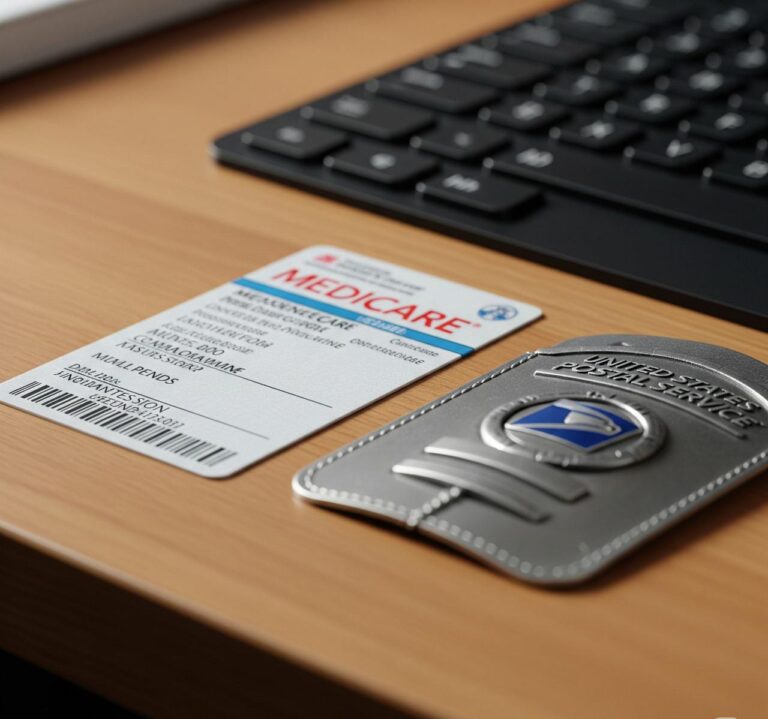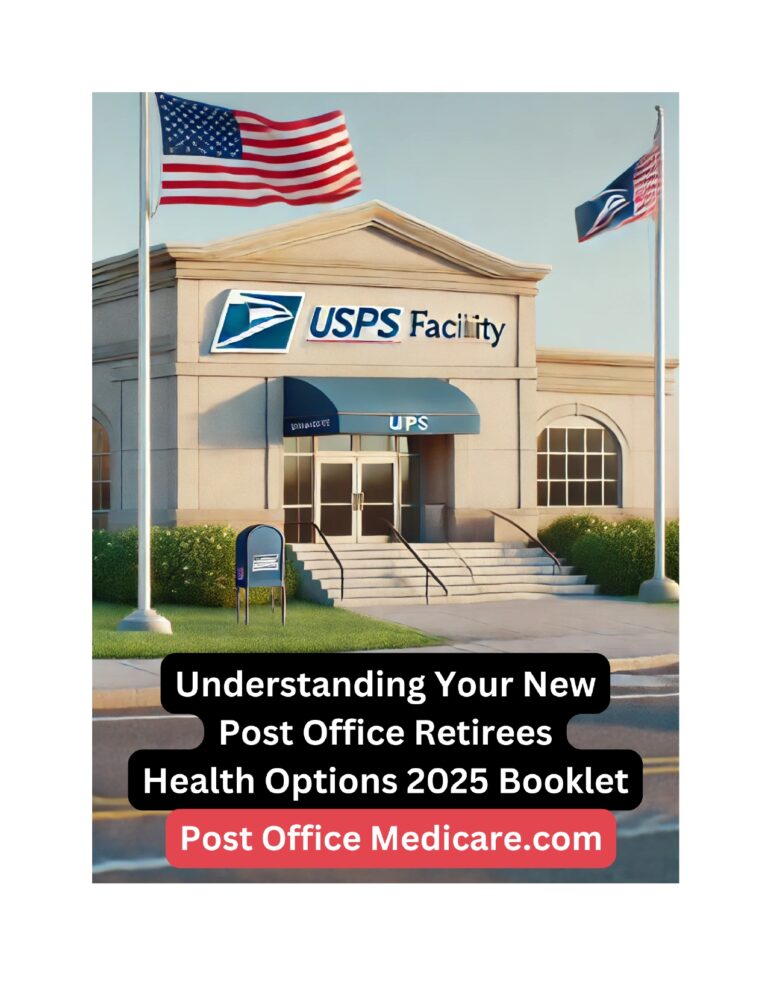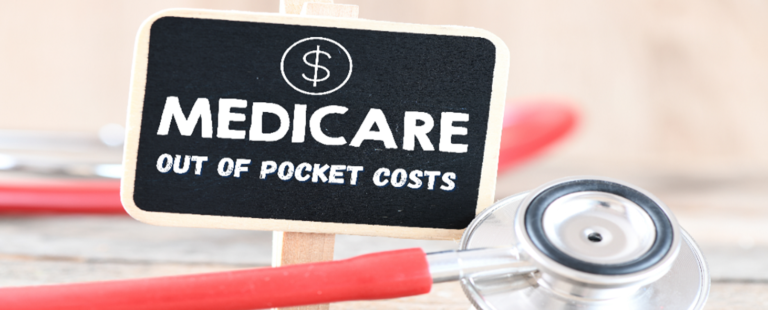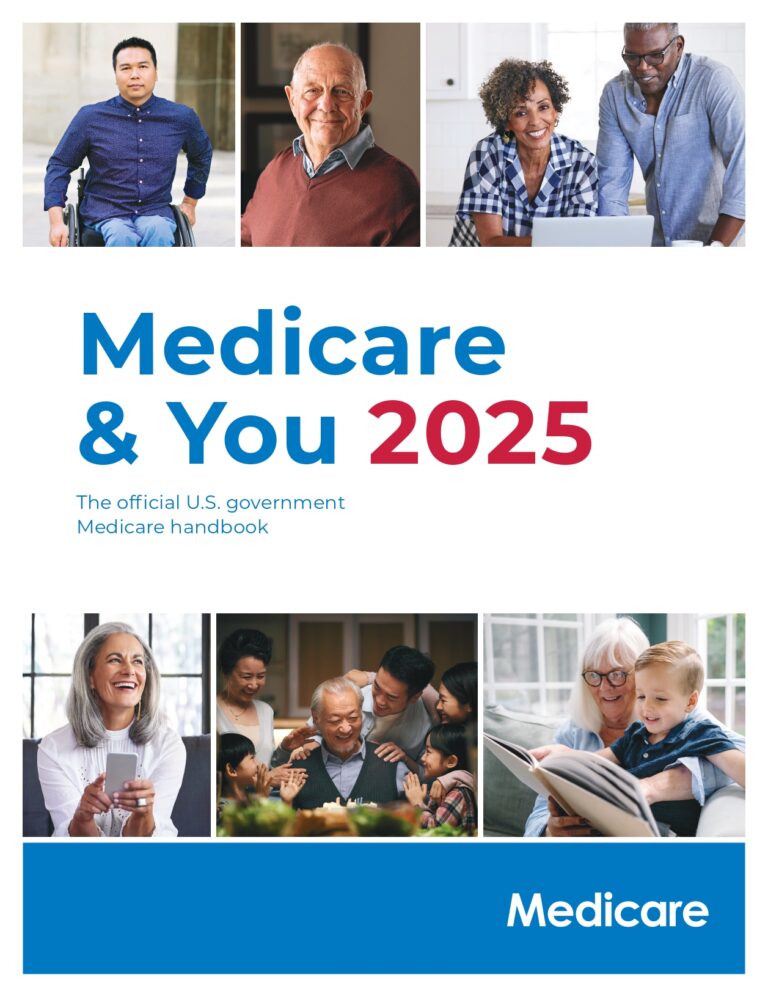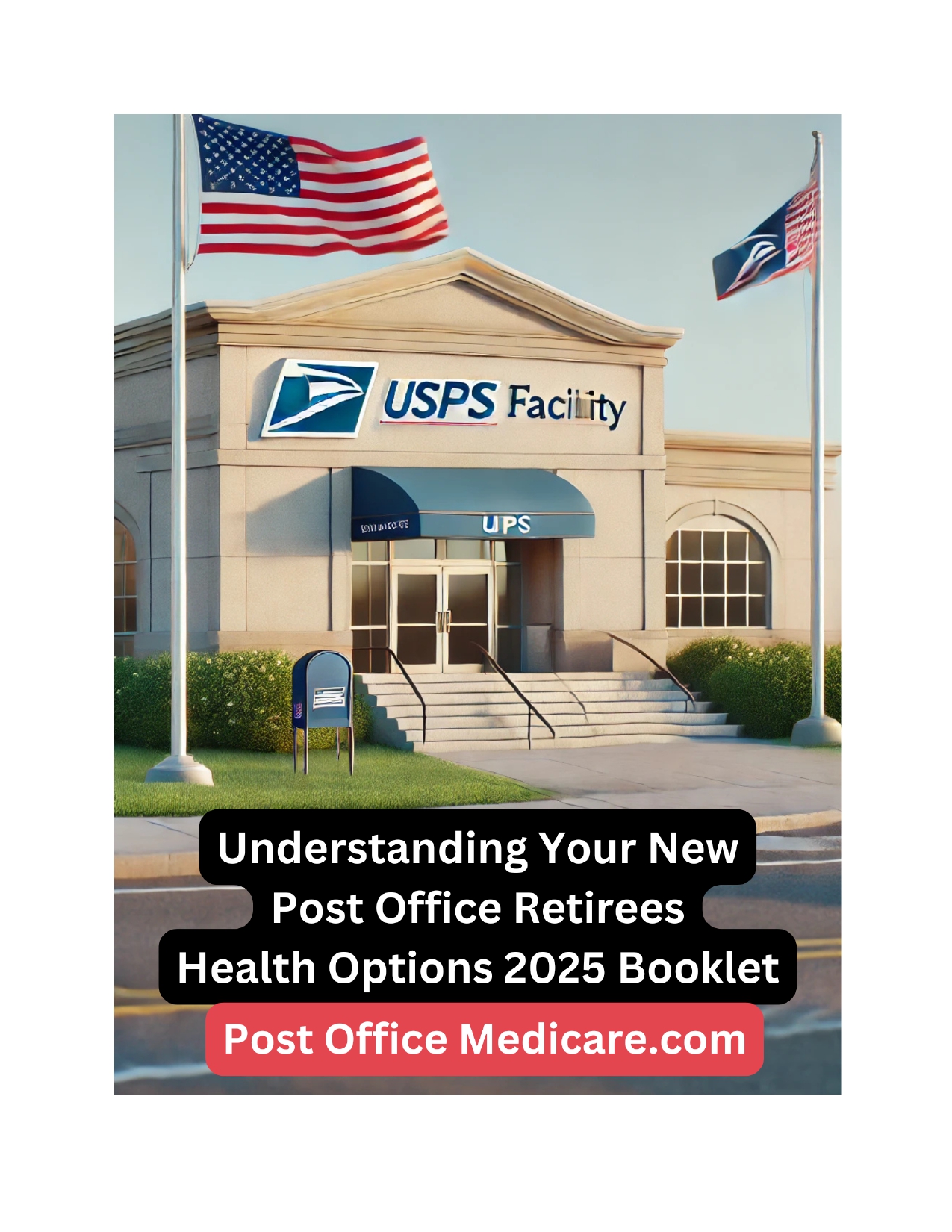Post Office Medicare: What Retired Postal Workers Need to Know
If you’re a retired postal worker—or planning to retire soon—understanding how Medicare works alongside your Federal Employees Health Benefits (FEHB) plan is crucial. With recent changes and growing interest around Post Office Medicare integration, it’s more important than ever to stay informed.
In this comprehensive guide, we’ll break down everything you need to know about Medicare for retired USPS employees, including eligibility, enrollment, benefits, costs, and how Medicare works with FEHB plans.
What Is Post Office Medicare?
“Post Office Medicare” refers to how Medicare interacts with the health coverage provided to United States Postal Service (USPS) retirees through the Federal Employees Health Benefits (FEHB) program. While not a separate type of Medicare, the term often describes the coordination of benefits between Medicare and FEHB for retired postal workers.
Why Is Medicare Important for USPS Retirees?
If you are eligible for Medicare, it can significantly reduce your out-of-pocket healthcare costs. As a postal retiree, you likely have access to FEHB in retirement. When combined properly with Medicare Part A and Part B, your coverage can become more comprehensive—and potentially more cost-effective.
Eligibility for Medicare as a USPS Retiree
As a former USPS employee, your Medicare eligibility is generally the same as the broader population:
- You qualify at age 65 if you or your spouse have worked and paid Medicare taxes for at least 10 years (40 quarters).
- You may also qualify earlier if you have a disability or certain medical conditions (e.g., end-stage renal disease).
Most USPS retirees will automatically qualify for Medicare Part A (hospital insurance) at no cost.
Medicare Parts Explained for Postal Retirees
To make the best decision, it helps to understand the different parts of Medicare:
Medicare Part A – Hospital Insurance
- Covers inpatient hospital care, skilled nursing facilities, hospice, and some home health care.
- Free for most retirees.
Medicare Part B – Medical Insurance
- Covers doctor visits, outpatient services, preventive care, lab tests, etc.
- Monthly premium required (standard premium in 2025 is around $179.80, but varies based on income).
Medicare Part C – Medicare Advantage
- Offered by private companies, these plans combine Parts A and B and often include prescription drug coverage (Part D).
- May offer lower premiums, but provider networks are more restricted.
Medicare Part D – Prescription Drug Coverage
- Helps cover the cost of prescription medications.
- May be unnecessary if your FEHB plan already includes drug coverage.
Do USPS Retirees Have to Enroll in Medicare?
It depends. If you are a USPS retiree with FEHB coverage, you are not required to enroll in Medicare. However, enrolling in Medicare Part A and Part B can offer major advantages, especially when combined with FEHB.
The 2025 Medicare Integration for Postal Retirees
Under the Postal Service Reform Act of 2022, starting in January 2025, new Medicare enrollment requirements apply:
- All newly eligible USPS retirees will be automatically enrolled in Medicare Part B, unless they opt out.
- A new Postal Service Health Benefits (PSHB) program will replace current FEHB plans for USPS retirees.
- The PSHB program will coordinate with Medicare to lower costs and streamline coverage.
This change could significantly affect premiums and benefits for USPS retirees, especially those turning 65 after January 1, 2025.
Benefits of Combining Medicare with FEHB (or PSHB)
Here’s why enrolling in Medicare can benefit USPS retirees who also keep their FEHB or future PSHB plan:
✅ Reduced Out-of-Pocket Costs
When Medicare becomes your primary payer and FEHB/PSHB acts as the secondary payer, your total healthcare expenses are often lower.
✅ More Comprehensive Coverage
Some services not fully covered by Medicare may be picked up by your FEHB/PSHB plan—and vice versa.
✅ Freedom of Provider Choice
Unlike some Medicare Advantage plans, Original Medicare + FEHB/PSHB gives you access to a wider range of doctors and hospitals.
How Medicare Works with FEHB or PSHB
When you enroll in Medicare Part A and B, Medicare becomes the primary payer, and your FEHB (or starting 2025, PSHB) plan becomes secondary. This coordination helps cover:
- Deductibles
- Copayments
- Coinsurance
💡 Example: If Medicare covers 80% of a doctor’s visit and you have a FEHB plan that covers the remaining 20%, you’ll pay nothing out-of-pocket (assuming both plans cover the service).
When and How to Enroll in Medicare
Your Initial Enrollment Period (IEP) for Medicare starts 3 months before your 65th birthday, includes the month you turn 65, and continues for 3 months after.
You can enroll in:
- Medicare Part A and B via the Social Security Administration website
- Keep your FEHB or transition to PSHB in 2025
🚨 If you delay enrolling in Medicare Part B without other credible coverage, you may incur a lifetime late enrollment penalty.
Costs of Medicare for USPS Retirees
Here are the 2025 estimated monthly premiums for Medicare:
- Part A: Free (if eligible)
- Part B: $179.80 (standard, income-based)
- Part D: Varies by plan
- Medicare Advantage (Part C): Varies
You’ll continue paying FEHB/PSHB premiums in retirement, but your total healthcare costs may drop due to better coverage from Medicare.
Should You Opt Out of Medicare Part B?
For retirees eligible in 2025 and beyond, automatic enrollment in Part B will begin, but you may opt out.
Reasons to stay enrolled in Medicare Part B:
- It reduces your FEHB/PSHB out-of-pocket expenses.
- It’s required to get full benefits from PSHB plans starting in 2025.
- It avoids future late penalties.
Reasons to consider opting out:
- You have other credible coverage (e.g., spouse’s insurance).
- You have financial constraints and do not use many health services.
✅ Tip: Compare the costs of enrolling in Part B vs. potential out-of-pocket expenses without it.
Prescription Drug Coverage for USPS Retirees
If your FEHB/PSHB plan includes prescription drug coverage, you might not need to enroll in Medicare Part D.
However, review:
- Formularies
- Premiums
- Coverage gaps
⚠️ If your FEHB/PSHB coverage is not considered creditable, you could face penalties for delaying Part D enrollment.
Dental and Vision Coverage
Medicare does not cover dental or vision care. USPS retirees typically rely on FEDVIP (Federal Employees Dental and Vision Insurance Program) for:
- Cleanings
- Crowns
- Eye exams
- Glasses
You can enroll in FEDVIP during Open Season or after a qualifying life event.
Key Takeaways for Retired Postal Workers
- Enroll in Medicare Parts A & B at age 65 to maximize benefits and reduce costs—especially under the new PSHB program in 2025.
- Combining Medicare with FEHB or PSHB gives you more complete and affordable coverage.
- Be aware of important deadlines and new rules under the Postal Service Reform Act.
- Consult with a retirement benefits advisor to understand how the changes affect your personal situation.
Final Thoughts: Navigating Post Office Medicare in 2025 and Beyond
Whether you’re newly retired or planning ahead, navigating Medicare for USPS retirees doesn’t have to be confusing. With the upcoming changes in 2025, understanding your rights, benefits, and options will ensure you make the most cost-effective healthcare decisions.
Stay informed, compare plans, and when in doubt, consult a trusted advisor.
✅ Need Help?
If you’re unsure about when to enroll, how Medicare coordinates with your FEHB plan, or what the PSHB transition means for you—reach out to:
- OPM (Office of Personnel Management)
- Social Security Administration
- A federal retirement counselor
FAQs: Post Office Medicare for Retirees
Q: Do retired postal workers automatically get Medicare?
A: No, you must enroll—though you may be auto-enrolled in Part A if you’re collecting Social Security.
Q: What happens in 2025 with postal health benefits?
A: USPS retirees will move to a new Postal Service Health Benefits (PSHB) program coordinated with Medicare.
Q: Is Medicare better than FEHB?
A: They complement each other. Most retirees benefit from having both Medicare and FEHB (or PSHB).
Read More Blog
Follow Us On:- Facebook
